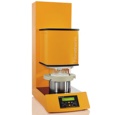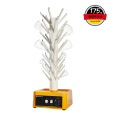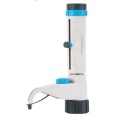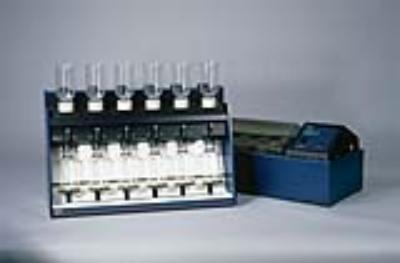基于䅟子秸秆、槟榔鞘、玉米棒的曼迪亚羔羊挤压全价饲料的比较评价Comparative Evaluation of Extruded Complete Feeds based on Finger Millet (Eleusine coracana) Straw, Areca (Areca catechu) Sheath and Maize (Zea mays) ) Cob in Mandya Lambs
方案详情

基于䅟子秸秆、槟榔鞘、玉米棒的曼迪亚羔羊挤压全价饲料的比较评价Comparative Evaluation of Extruded Complete Feeds based on Finger Millet (Eleusine coracana) Straw, Areca (Areca catechu) Sheath and Maize (Zea mays) ) Cob in Mandya Lambs基于�子秸秆、槟榔鞘、玉米棒的曼迪亚羔羊挤压全价饲料的比较评价B-5016[1-7] Comparative Evaluation of Extruded Complete Feeds based on Finger Millet (Eleusine coracana) Straw, Areca (Areca catechu)...... RESEARCH ARTICLE Indian Journal of Animal Research Comparative Evaluation of Extruded Complete Feeds based on Finger Millet (Eleusine coracana ) Straw, Areca (Areca catechu ) Sheath and Maize (Zea mays ) Cob in Mandya Lambs S.S. Sachin1, G.C. Sanjay1, T.M. Prabhu1, B.C. Umashankar1, K.C. Singh1, H.K. Siddalingamurthy2, H.S. Madhusudhan1, Mahadevappa D. Gouri1 ABSTRACT Background: Although crop residues rich in lignocellulose are a potential source of energy, their utilization is limited due to lack of lignolytic activity of the rumen microbial population. Feed processing by heat treatment is known to break the ligno-cellulolse complexes, in which extrusion has been reported as one of the best processing techniques to improve the nutritional value and efficient utilization of complete diets. A comparative evaluation of extruded complete feed based on finger millet straw, a conventional crop residue, along with areca sheath and maize cob has been taken up in this study. Methods: The extruded complete feed was prepared using roughage and concentrate at proportion of 40:60, respectively. Twenty four Mandya lambs of about 3 to 4 months of age with body weight ranging from 7.8 to 12.9 kg were divided into three groups of eight each in a completely randomized design. Feeding trial was carried out for 12 weeks. The animals were randomly assigned to one of the treatment groups viz ., T1 (Finger millet straw based extruded complete feed), T2 (Areca sheath based extruded complete feed) and T3 (Maize cob based extruded complete feed). Digestion trial was conducted using 5 animals in each group during the last week of the growth trial. Result: Analysis of chemical composition (%) revealed that, maize cob and areca sheath were comparable with finger millet straw except that the maize cob contained lower total ash (2.52 v/s 8.61) and higher NDF and hemicellulose content (86.66 v/s71.61; 29.79v/s17.18). Rumen in vitro net gas (ml / 200 mg DM / 24 h) production and energy density (ME MJ / kg DM) was higher in areca sheath and maize cob as compared to finger millet straw. There was significant difference in total DMI (g/d and g/kgW0.75) among the treatment groups (P 0.05). There was also a significant difference in OM, CP, EE and ADF intake (P 0.05). The ADG (g) and FCR (g DMI/ g BW gain) for T1, T2 and T3 groups were statistically non-significant. The mean apparent digestibility (%) of DM, OM, CP, NDF and ADF was significantly different among the treatment groups(P 0.01). The per cent Digestible organic matter in dry matter (DOMDM) (T1:70.89,T2:76.13and T3:63.33) was also significantly different among the treatments (P 0.01). It was concluded that the growth rate of lambs fed finger millet straw, areca sheath and maize cob based extruded complete feeds was comparable and could be utilized to sustain production performance of growing Mandya lambs. Key words : Areca sheath, Digestibility, Extruded feed, Maize cob, Mandya lambs. 印度纳塔克邦兽医动物和渔业科学大学兽医学院动物营养学系 INTRODUCTION Small ruminant production systems are considered to be most sustainable enterprise to provide supplementary income and livelihood to small land holders and landless rural holds. A major constraint in the feeding management of sheep raising has been the deficiency of fodder resource, mainly due to lack of grazing land and diminishing area under green forage crops cultivation. The deficiency of fodder in India is to the tune of 23 per cent of dry and 32 per cent of green forages, with more than 65 per cent of the farmers depending on the crop residues as a basal roughage for feeding animals (Roy et al ., 2019). Finger millet (Eleusine coracana ) straw is a conventional crop residue, obtained as the entire dry plants left out after harvesting cereal grains from the finger millet crop. Maize is the third most important food crop in India after rice and wheat. Maize (Zea mays ) cob is the stalk portion of the crop available in abundant quantities, after grains are 1Department of Animal Nutrition, Veterinary College, Karnataka Veterinary Animal and Fisheries Sciences University, Bengaluru-560 024, Karnataka, India. 2Livestock Research and Information Centre, Nagamangala, Mandya-571 432, Karnataka, India. Corresponding Author: T.M. Prabhu, Department of Animal Nutrition, Veterinary College, Karnataka Veterinary Animal and Fisheries Sciences University, Bengaluru-560 024, Karnataka, India. Email: prabhutmann@gmail.com How to cite this article: Sachin, S.S., Sanjay, G.C., Prabhu, T.M., Umashankar,B.C.,Singh,K.C.,Siddalingamurthy,H.K., Madhusudhan, H.S. and Gouri, M.D. (2023). Comparative Evaluation of Extruded Complete Feeds based on Finger Millet (Eleusine coracana ) Straw, Areca (Areca catechu ) Sheath and Maize (Zea mays ) Cob in Mandya Lambs. Indian Journal of Animal Research. Submitted: 10-09-2022 Accepted: 23-03-2023 Online: separated from the crop. It is rich in cellulosic fibres with low protein content and can be considered as an alternative feed resource for ruminants especially during dry season(Dzowela, 1987). Areca (Areca catechu ) is a commercial plantation crop with high economic returns, widely cultivated in some regions of Karnataka, Kerala and Assam. Abundant quantities of areca sheath are available from the cropping areas of areca trees. Each arecanut tree sheds about 10 sheaths per year and the total annual yield of sheath is about 4500 sheaths per hectare. It is estimated that the potential availability of areca sheath is about 1.20 million tonnes annually and could be utilised as a valuable source of roughage feed for feeding ruminant livestock (Gaikwad and Bhargav, 2012). The major constraint in the utilization of these crop residues and byproduct feeds is the low digestibility due to high cellulosic contents and lingo-cellulose complexes. The lignocellulose component is the potential source of energy but the utilization of such residues by ruminants is limited due to lack of lignolytic activity of the rumen microbial population (Thakur et al ., 2010). Various feed processing techniques have been employed on crop residues which include physical or chemical treatment with or without using thermal or moisture or a combination of methods. To improve the nutritional value of crop residues for ruminants feeding, various processing methods like grinding, pelleting, treatment with chemicals like Ammonia (Reddy and Reddy, 1985) and sodium hydroxide (Ben-Ghedalia et al ., 1982) have been attempted. In modern feed milling operations, extrusion is one of the best processing techniques to enhance the nutritional value and increase the efficiency of feeds. The extrusion process has been largely regarded as an expensive feed technology for ruminant feeding. However, compared to two decades earlier, the costs of machinery and operational expenditure on a larger scale have been considerably reduced (Singh, 2019). A few studies have been undertaken in the past, on nutritional evaluation of extruded fibrous feeds, however, there is a limitation of information on the effects of feeding extruded crop residues based complete feeds on the growth performance of sheep. Since the extrusion process seems to have a potential as a future technology, this experiment has been undertaken to evaluate the extruded complete feeds based on finger millet straw, areca sheath and maize cob on the growth performance of Mandya lambs. MATERIALS AND METHODS The present study was conducted for comparative evaluation of the efficiency of utilization of extruded complete feeds based on finger millet straw, areca sheath and maize cob in Mandya lambs. Firstly, the roughage and concentrate (40:60) ingredients were processed in the shredder and hammer mill, respectively. The compounded feed mixture (CFM) was prepared using maize grain, wheat bran, soybean meal, urea, mineral mixture and common salt at 72, 12.5, 10.5, 2, 2 and 1%, respectively. The quantities of extruded complete feeds required for the entire duration of the study was processed in a single batch. Initially, the finger millet straw(FMS) was chopped and shredded to reduce the chaff length to 5-6 cm. For preparing 25 kg of extruded complete feed,10 kg of chaffed FMS was blend with 15 kg of CFM and 8 kg water. The mixture was allowed for 30 minutes for conditioning and then passed through the extruder (Henan Strongwin Machinery Equipment Co. Ltd, Capacity: 25-50kg per hour) using 8 mm die, with the exit temperature of 70-80C. The product was spread uniformly on polythene sheet and left for drying by aeration for 2-3 hours and then packed. The dried extruded complete feed was stored in polythene bags until used for feeding animals. Growth trial Twenty-four Mandya (Bannur) breed of ram lambs with three to four months of age and body weight ranging from 7.8 to 12.9 kg were selected from the flock maintained at Livestock Research and Information Centre (Sheep), Nagamangala, Mandya (Research period- 2021-22). The lambs were identified by ear tags and divided into three groups of eight each based on body weight and age in a completely randomized design (CRD). The feeding trial was carried out for twelve weeks with an initial adjustment period of two weeks. Digestion trial was conducted using 5 animals in each group, with collection period of 6 days during the last week of the feeding trial. The experimental lambs were housed in a separate ventilated shed and provided uniform managemental care. The extruded complete feed was offered in concrete troughs to feed lambs individually. All the lambs were dewormed with albendazole and praziquantel and vaccinated against Enterotoxaemia and Haemorrhagic septicaemia well before starting the growth trial. The experimental diet for T1 group comprised Finger millet straw based extruded complete feed (FMS ECF), Areca sheath based extruded complete feed (AS ECF) for group T2 and Maize cob based extruded complete feed (MC ECF) for T3 group. The proportion of roughage (finger millet straw or areca sheath or maize cob) to concentrate was 40:60 in the extruded complete feed. The quantity of extruded complete feed required to supply adequate amount of energy and protein was weighed and offered to individual lambs ad libitum , two times (9.00 AM and 4.00 PM) in a day. The ort of extruded complete feed was weighed and recorded daily. The daily intake of extruded complete feed by individual lambs was recorded. Samples of feed offered and left over residue were collected and analyzed once in a week for the DM estimation (AOAC, 2005). Dry matter intake was calculated by deducting the left over residue from the mean daily offered quantities of extruded complete feed. The lambs were weighed once in a week during morning hours on a digital electronic weighing balance of 100 kg capacity, before having access to the feed and water. Average daily body weight gain of individual lambs was calculated during the trial. The FCR was determined by calculating the feed DM consumed per unit of body weight gain during the experimental period. Digestion trial A digestion trial was conducted during last week of the digestion trial using 5 animals from each group, with 6 days collection period. During the trial daily intake of feed and the quantity of dung voided was recorded. Samples of feed offered and orts were collected every day for DM estimation and were pooled for analysis of chemical constituents. The dung was collected by harnessing with plastic bag tied around the lumbar region of animal, bags were emptied 2-3times a day and faecal pellets were stored in polythene covers. Faeces stored in covers over 24 h period were emptied and weighed every day at 9.00 am. The daily output of dung (pellets) from each lamb was crushed and mixed. After proper mixing, 1/10th of total voided faeces from each animal was sub sampled for dry matter estimation. The samples collected over six days were pooled, ground to obtain a particle size of 1 mm and stored in an air tight polythene container for further chemical analysis. Sampling for nitrogen estimation was done separately, 1/40th of total voided faeces was sub sampled in air tight glass bottles of known weight with 5 ml of 25 per cent sulphuric acid (H2SO4) added every day as a preservative. The pooled and ground dung samples of individual lambs were used for analyses. Chemical analyses The proximate analysis of the individual ingredients, extruded complete feeds, samples of ort and, faecal pellets was carried out as per AOAC (2005). The fibre fractions viz ., neutral detergent fibre (NDF), acid detergent fibre (ADF), cellulose, hemicellulose and acid detergent lignin(ADL) contents were determined using Fibretherm and as per the methods described by Van Soest et al . (1991). Analysis of ME content The ME content of finger millet straw, areca sheath, maize cob, compounded feed mixture, finger millet straw based extruded complete feed, areca sheath based extruded complete feed and maize cob based extruded complete feed was determined by rumen in vitro gas production technique(RIVGPT) according to procedure described by Menke and Steingass (1988). A crossbred (Holstein Friesian x Bos indicus ) cow, weighing 400 kg, fitted with a flexible rumen cannula of large diameter (Bar Diamond, Inc. USA), served as the donor of the rumen inoculum. It was fed with basal diet consisting of finger millet straw at the rate of 5.0 to 6.0 kg per day and CFM at 4.0 kg/day in two equal portions (8.00 am and 4.00pm). The rumen fluid was collected between 6.30 am and7.00 am before offering roughage. Air equilibrated feed samples (200±10 mg) of roughage, compounded feed mixture and extruded complete feed were incubated in 100 ml calibrated glass syringes in triplicate according to procedure described by Menke and Steingass (1988) with 30 ml buffered rumen fluid with three each blank incubations and the reference standards of roughage and concentrate. The incubation was done in a water bath maintained at 39C. The readings of displaced syringes were recorded at different time intervals over 24 h, i .e ., at 8 and 24 h. Whenever the syringe readings exceed 90 ml, the readings were reset to 30 ml, then cumulative gas production for 24 h time period was calculated. For determination of ME content of test samples, 24 h net cumulative gas production was corrected for reference standard and blank. Using chemical composition and net gas production (corrected for blank and reference standard) at 24 h of incubation, ME was calculated using the following equations; Compounded feed mixture / Extruded complete feed: ME= 1.06+0.1570 GP+0.0084 CP+0.022 EE-0.0081 TA Roughages:ME= 2.2+0.1357 GP+0.0057 CP+0.0002859 EE2 Where, GP= Gas production (ml/200 mg DM), CP= Crude protein, g/kg DM. EE= Ether extract, g/kg DM. TA= Total ash, g/kg DM. ME= Metabolizable energy, MJ/kg DM. Statistical analyses The data on various parameters were subjected to statistical analysis using analysis of variance (ANOVA) according to the procedures described by Snedecor and Cochran (1994). GraphPad Prism software (Version 8.4.3.) was used for analyses. Individual differences between means were tested using Tukey ‘t’ test and results interpreted accordingly. RESULTS AND DISCUSSION Theproximatecompositionandfibrefractionsof compounded feed mixture, roughage and extruded complete feeds are presented in Table 1. The composition with respect to proximate principles and fibre fractions in maize cob was comparable with the values reported by Kavya et al . (2018) and Senani et al . (2013) except for the total ash which was lower. Similarly, the chemical composition and fibre fractions of areca sheath were comparable with the values reported by Gowda et al . (2012). The proximate principles of finger millet straw were in corroboration with the findings of Ramachandra (1997) and Chandrasagara et al . (2020). The fibre fraction composition of finger millet straw was comparable with the values reported by Bhatta et al . (2000). The ME (MJ / kg DM) content and RIVGP-24 h (ml/200mg DM) of different feedstuff are presented in Table 2. The difference in energy density between total mixed ration in mash and extruded pellet form was 0.618, 1.282 and 0.418ME MJ/kg DM, respectively for finger millet straw, areca sheath and maize cob based diets. The extrusion cooking of roughage based complete diets could improve the energy density by 4.2 to 6.4% in the present study. The results are in corroboration with the observations of Nagalakshmi and Reddy (2012) and Thirumalesh et al . (2003). Therefore, extrusion process seems to have a great potential as future technology, in view of advantages of improved nutrition. Extrusion offers the advantages of increased starch gelatinisation and fat stability resulting in increased ME content. Extrusion also results in denaturation of protein leading to sustained rumen degradation and increased intestinal digestibility of protein (Stern et al ., 1985). There was a significant difference (P 0.05) in total DMI(as g per day) among the treatment groups, with T2 group of animals consuming less feed DM than T1 and T3 groups. The levels of dry matter intake were quite adequate in all the groups to meet the requirement of growth. Since the DMI is impacted by the net energy intake of animals (NRC,2001), the lower intake of DMI in group T2 could be ascribed to the higher energy density of the respective diet (11.15MJ/kg DM) compared to the diet of T1 (10.27 MJ/kg DM) and T3 (10.15 MJ/kg DM).There was significant (P 0.05) difference in the intakes of OM, CP, EE and ADF among the treatment groups. These findings were found to be higher than the reported values of Kavya et al . (2018), Venkatesh et al . (2014) and Pradeep (2015) except for ADF intakes in all treatment groups. The higher nutrient intake (except for ADF) observed for extruded finger millet, areca sheath and maize cob based diets than conventionally fed diet as observed by different group of research workers might be due to the effect of extrusion process on the diet. The average daily body weight gain (g) of the lambs did not differ significantly (P 0.05) among the treatment groups (Table 3). The ADG reported by Kavya et al . (2018) was very low for conventional finger millet straw (31.6 g) and maize cob (39.3 g) based diet in Mandya lambs as compared to the present findings. Similarly, the ADG was found to be higher in the present study as compared to Pradeep (2015) for finger millet straw (31.6 g) and maize cob (46.6 g) based complete diet in mash form in Mandya lambs. In Bandur lambs fed spent maize cob based total mixed ration Senani et al . (2013) observed 4.64 to 4.79 kg gain as compared to 5.48 kg in the present study with the same breed of sheep fed extruded complete feed. Ajit et al .(2017) reported ADG of 70.8 g, comparable to the present Table 1: Proximate composition and fibre fractions1 (%, DMB) of compounded feed Mixture (CFM), roughage and extruded complete feeds. | Attribute CFM Roughage T1 T2 T3 Finger Areca Maize Finger millet straw Areca sheath Maize cob based millet sheath cob based extruded based extruded extruded complete straw complete feed complete feed feed I) Proximate principles Organic matter 94.36 91.39 93.65 97.48 93.69 94.30 95.58 Crude protein 18.52 4.79 3.29 3.19 15.32 14.14 13.91 Ether extract 2.64 0.91 0.90 0.51 2.13 1.71 1.89 Total ash 5.64 8.61 6.35 2.52 6.31 5.70 4.42 II) Fibre fractions Neutral detergent fibre 51.83 71.61 76.66 86.66 59.16 61.03 60.15 Acid detergent fibre 15.00 54.43 52.63 56.87 22.15 25.52 24.84 Acid detergent lignin 0.50 5.66 3.52 4.92 2.05 2.8 2.11 Hemicellulose 36.83 17.18 24.03 29.79 37.01 35.51 35.31 Cellulose 14.50 48.77 49.11 51.95 20.10 22.72 22.73 1Variation in duplicate measurements was within ±3% of the mean. Table 2: Rumen in vitro gas production1 (RIVGP) and predicted ME values of different feed resources. Samples RIVGP (ml/200 mg/24 h) ME (MJ/kg DM) Finger millet straw 33.79±0.4030 7.09 Areca sheath 38.44±0.4995 7.63 Maize cob 36.05±0.5281 7.29 Compounded feed mixture 54.63±0.3462 11.36 FMS ECF2 50.49±0.8341 10.27 AS ECF3 64.00±0.5279 11.15 MC ECF4 49.84±0.6102 10.15 1Variation in six replicate measurements from two trials was within±3% of the mean. 2FMS ECF: Finger millet straw based extruded complete feed. 3AS ECF: Areca sheath based extruded complete feed. 4MC ECF: Maize cob based extruded complete feed. RIVGP: Rumen in vitro gas production. ME: Metabolizable energy. study, in growing Mandya lambs fed conventional FMS based diets. There was no significant difference in cumulative average FCR (g DMI/g body weight gain) among the dietary groups as shown in the Table 3. In contrast, the FCR as reported by Kavya et al . (2018) and Pradeep (2015) was found more wider (8.12 to 12.71) reflecting the advantages associated with feed processing by extrusion cooking. Table 3: Mean intake of different nutrients during the feeding trial period. Attribute T1 T2 T3 SEM P DMI g per day 433.52a 402.56b 433.64a 8.67 0.025 % of body weight 3.61 3.37 3.67 0.01 0.101 Organic matter intake g per day 406.15ab 375.42b 414.47a 8.20 0.015 % of body weight 3.39 3.18 3.52 001 0.069 Crude protein intake g per day 66.42a 56.91b 60.31b 1.26 0.000 % of body weight 0.55a 0.47b 0.51ab 0.01 0.002 Ether extract intake g per day 9.22a 6.87c 8.20b 0.17 0.000 % of body weight 0.08a 0.06c 0.07b 0.00 0.000 NDF intake g per day 256.45 245.67 260.85 5.20 0.126 % of body weight 2.14 2.05 2.21 0.01 0.205 ADF intake g per day 96.01b 102.74ab 107.72a 2.08 0.002 % of body weight 0.80b 0.86ab 0.91a 0.01 0.016 a,bMean values bearing different superscripts in a row differ significantly (P<0.05 or P<0.01). SEM: Standard error of means. T1 : Finger millet straw based extruded complete feed. T2 : Areca sheath based extruded complete feed. T3 : Maize cob based extruded complete feed. Table 4: Growth performance of lambs and nutrient digestibility of experimental diets. Attribute T1 T2 T3 SEM P Initial body weight (kg) 9.58 9.58 9.40 0.57 0.967 Final body weight (kg) 15.36 15.30 14.88 0.57 0.810 Body weight gain (kg) 5.78 5.72 5.48 0.24 0.602 Average daily gain (g) 68.53 65.58 65.70 7.42 0.952 Feed conversion ratio 6.48 7.76 8.07 0.80 0.384 Nutrient Digestibility (%)1 Dry matter 74.06b 79.39a 64.93c 0.01 0.000 Organic Matter 75.67b 80.73a 66.25c 0.01 0.000 Crude protein 76.70a 77.29a 70.02b 0.01 0.002 Ether extract 68.50 69.11 56.72 003 0.074 Neutral detergent fibre 70.40a 75.94a 52.82b 0.01 0.000 Acid detergent fibre 40.62a 55.44a 21.29b 0.04 0.000 DOMDM2 70.89b 76.13a 63.33c 0.01 0.000 a,bMean values bearing different superscripts in a row differ significantly (P<0.05 or P<0.01). SEM: Standard error of means. T1: Finger millet straw based extruded complete feed. T2 : Areca sheath based extruded complete feed. T3 : Maize cob based extruded complete feed. 1Each value is mean of five observations. 2DOMDM-Digestible organic matter in dry matter. The per cent digestible organic matter in dry mater (DOMDM) among the treatment groups was significantly(P 0.01) different. There was significant (P 0.01) difference in the apparent digestibility of different nutrients viz . DM, OM, CP, NDF and ADF among the experimental diets (Table 4). The observed values are comparable with the findings of Kavya et al . (2018) except for digestibility of CP and NDF which are higher in the present study. Similarly, the digestibility values of OM, CP and NDF reported in the present study are higher than the values reported by Venkatesh et al . (2014). The variation in the CP and NDF digestibility might be related to the processing effect of extrusion on the nutritive value of crop residue based diets. Corroborating with the observations of the present study, Reddy and Reddy (1998) observed higher digestibilites of DM, OM, CP and CF with expander extruded complete feed compared to the conventional diet in Ongole bull calves. In the present study, the effect of increased NDF digestibility could be the result of delignification of cellulose due to the extrusion of the crop residue based complete diet. The increased digestibility of NDF and the higher DOMDM values in lambs fed T2 could also be attributed to lower lignin and higher ME content in the diet. These observations are supported by the findings of Chaji et al . (2010) who reported that, the steam treatment disrupts lignocellulose and allows for improved utilization of cell wall polysaccharides by cellulolytic enzymes. It was observed that, the steam explosion process facilitates the attachment of cellulolytic microbes to the fibre and increases the susceptibility of cellulose to the enzymatic hydrolysis. Steam explosion detached the carbohydrates from the lignin by breaking the chemical and physical bonds of ligno-cellulose complexes, consequently resulting in the increased digestibility of fibre fractions (Goto and Yokoe, 1996). CONCLUSION Based on the results of the present study, it is inferred that the finger millet straw, areca sheath and maize cob based extruded complete feeds could be utilized to attain optimum growthrateoflambsandcansustainproduction performance during feed scarcity period. ACKNOWLEDGEMENT The support and facilities provided by the Director of Research, KVAFSU, Bidar for conducting this study is thankfully acknowledged. Authors also thank the Veteran Laboratories, Mandya, Karnataka for extending facility to prepare extruded complete feeds used in this study. Conflict of interest: None. REFERENCES AOAC (Association of Official Analytical Chemists). (2005). Official Methods of Analysis. 15thEdition. Association of Official Analytical Chemists. Washington, DC. Ajit, K.S., Arpitha, R., Madhura, Y., Prabhu, T.M., Gloridoss, R.G., Narasimhamurty, H.N. and Chandrapal Singh, K. (2017). Effect of feeding spineless cactus (Opuntia ficusindica ) on intake, digestibility and growth performance in lambs. International Journal of Livestock Research. 7(12): 101-110. Ben-Ghedalia, D., Shefet, J., Miron and Dror, Y. (1982). Effect of ozone and sodium hydroxide treatments on some chemical characteristics of cotton straw. Journal of the Science of Food and Agriculture. 33: 1213-1218. Bhatta, R., Krishnamoorthy, U. and Mohammed, F. (2000). Effect of feeding tamarind (Tamarindus indica ) seed husk as a source of tannin on dry matter intake, digestibility of nutrients and production performance of crossbred dairy cows in mid-lactation. Animal Feed Science and Technology. 83:67-74. Chaji, M.T., Mohammadabadi, Mamouei, M. and Tabatabaei, S. (2010). The effects of processing with high steam and sodium hydroxide on nutritive value of sugarcane pith by in vitro gas production. Journal of Animal and Veterinary Advances.9: 1015-1018. Chandrasagara, A.N., Umashankar, B.C., Singh, K.C., Prabhu, T.M., Nagesh, D.R., Gouri, M.D. and Bhajantri, S. (2020). Evaluation of extruded finger millet straw based complete diet in lactating dairy cows. Animal Nutrition and Feed Technology. 20(1): 131-140. Dzowela, B.H. (1987). Efforts to enhance maize stover utilization for small holder livestock producers in Malawi. Proceedings of ARNAB workshop on the utilization of agricultural by-products as livestock feeds in Africa. 27-36. Gaikwad, B.B. and V.K. Bhargav. (2012). Size reduction machine for arecanut sheath-enabling alternative animal fodder generation. Journal of Agricultural Technology. 1(2): 64. Goto, M. and Yokoe, Y. (1996). Ammoniation of barley straw: Effect on cellulose crystallinity and water holding capacity. Animal Feed Science and Technology. 58: 239-247. Gowda, N.K.S., Anandan, S., Pal, D.T., Vallesha, N.C., Verma, S. and Sampath, K.T. (2012). Technology to use areca sheath as alternative dry fodder for dairyanimals. Indian Dairyman.64(10): 58-61. Kavya, P.S., Prabhu, T.M., Pradeep, R., Gloridoss, R.G., Singh, K.C., Suresh, B.N. and Siddalingamurthy, H.K. (2018). Nutritional evaluation of spent maize (Zea mays ) cobs as roughage source in sheep feeding. Indian Journal of Small Ruminants.24(1): 57-61. Menke, K.H. and Steingass, H. (1988). Estimation of the energetic feed value obtained from chemical analysis and in vitro gas production using rumen fluid. Animal research and Development. 28: 7-55. Nagalakshmi, D. and Reddy, D.N. (2012). Effect of feeding processed paddy straw based complete diets on nutrient utilization and rumen fermentation pattern in sheep. Indian Journal of Animal Nutrition. 29(2): 132-137. NRC. (2001). Nutrient Requirements of Dairy Cattle. Seventh Revised Edition., National Research Council, National Academy of Sciences, National Academy Press, Washington, D.C. Pradeep, R. (2015). Nutritional evaluation of maize (Zea mays ) cob shank based total mixed ration in growing lambs. M . V . Sc . Thesis presented to the Karnataka Veterinary, Animal and Fisheries Sciences University, Bidar. Ramachandra, B. (1997). Effect of feeding urea ammoniated ragi straw on body weight gain of crossbred heifers. Karnataka Journal of Agricultural Sciences. 10(1): 197-201. Reddy, G.V.N. and Reddy, M.R. (1985). Effect of ammonia treatment and processing of whole cotton plants as sole source of roughage in complete feeds for growing cross-bred calves. Animal Feed Science and Technology. 13: 93-102. Reddy, G.V.N. and Reddy, M.R. (1998). Utilization of expander-extruder processed complete diet containing sunflower heads in Ongole bull calves. Indian Journal of Animal Nutrition. 15(4): 272-275. Roy, A.K., Agrawal, R.K., Bhardwaj, N.R., Mishra, A.K. and Mahanta, S.K. (2019). Revisiting national forage demand and availability scenario. In: Indian Fodder Scenario: Redefining State Wise Status. ICAR- AICRP on Forage Crops and Utilization, Jhansi, India, pp. 1-21 Senani, S., Sharath, B.S., Elongovan, A.V., Samanta, A.K. and Kolte, A.P. (2013). Use of spent maize cobs as source of roughage in the ration of Bandur lambs. Indian Journal of Animal Nutrition. 83(11): 1207-1209. Singh, C.K. (2019). Utilisation of Feed Resources and Challenges in Dairy Production in Sri Lanka. Proceedings of National Conference on Dairy Production and Annual Convention of Sri Lanka Veterinary Association, April Bandarnaike Memorial International Convention Centre, Colombo, Sri Lanka. 5-7. Snedecor, G.W. and Cochran, W.G. (1994). Statistical Methods. 9th Edn. Affiliated East-West Press, IOWA State University Press. Stern, M.D., Santos, K.A. and Satter, L.D. (1985). Protein degradation in rumen and amino acid absorption in small intestine of lactating dairy cattle fed heat-treated whole soybeans. Journal of Dairy Science. 68(1): 45-56. Thakur, S.S., Varma, M.P., Ali, B., Shelke, S.K. and Tomar, S.K.(2010). Effect of exogenous fibrolytic enzymes supplementation on growth and nutrient utilization in Murrah buffalo calves. Indian Journal of Animal Sciences. 80(12): 1217-1219. Thirumalesh, T., Surekha, K. and Reddy, V.N. (2003). Effect of bajra straw based complete diet on nutrient digestibility and rumen metabolism in sheep. Indian Journal of Animal Nutrition. 20(4): 389-394. Van Soest, P.J., Robertson, J.B. and Lewis, B.A. (1991). Methods for dietary fibre, neutral detergent fibre and non-starch polysaccharides in relation to animal nutrition. Journal of Dairy Science. 74: 3583-3597. Venkatesh, B.S., Prabhu, T.M., Gloridoss, R.G., Chandrapal Singh, K., Nagaraja, R. and Manju, G.U. (2014). Nutritional evaluation of maize (Zea mays ) husk: A new feed resource for small ruminants. The Mysore Journal of Agricultural Sciences. 48(3): 406-412.
确定

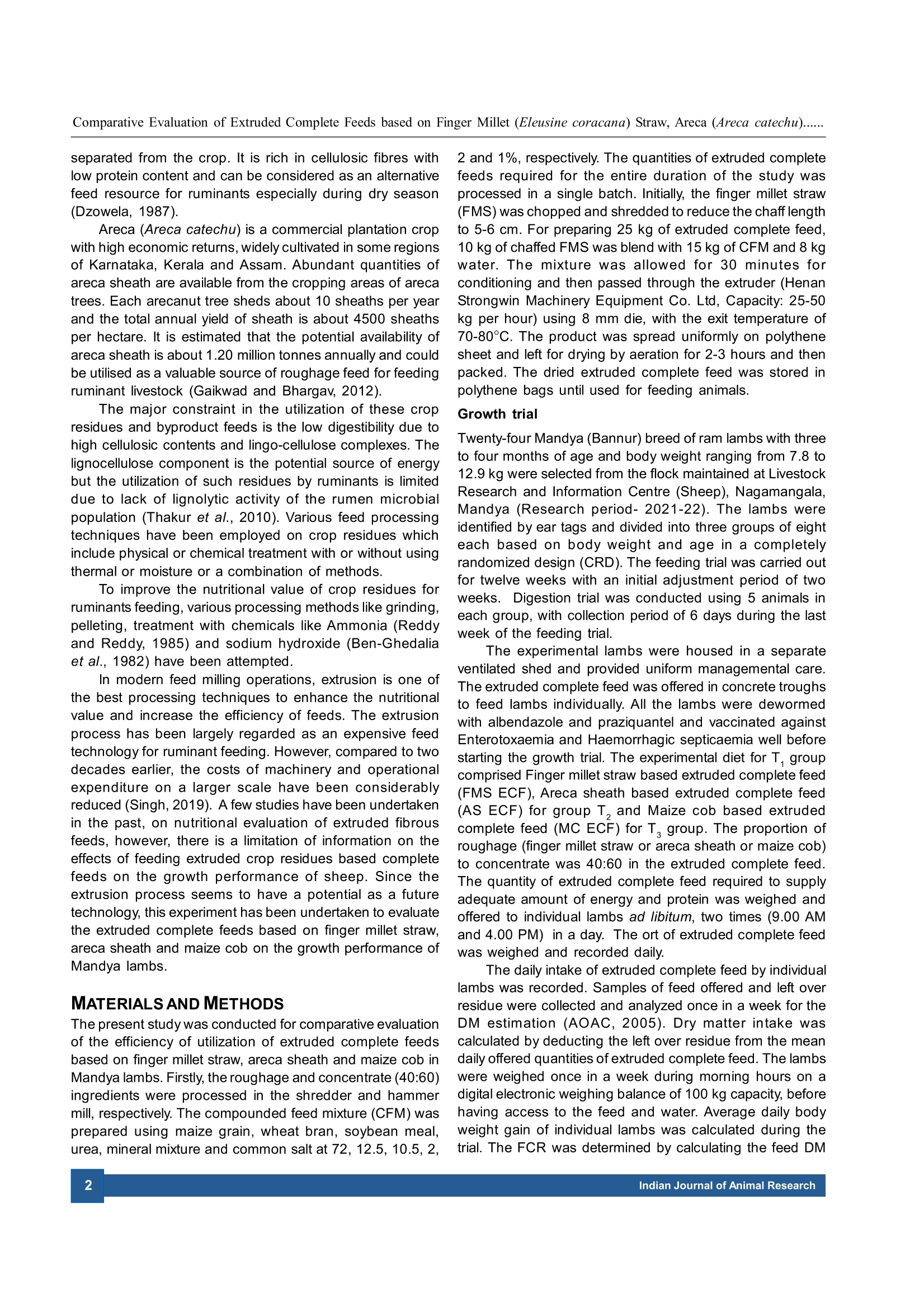
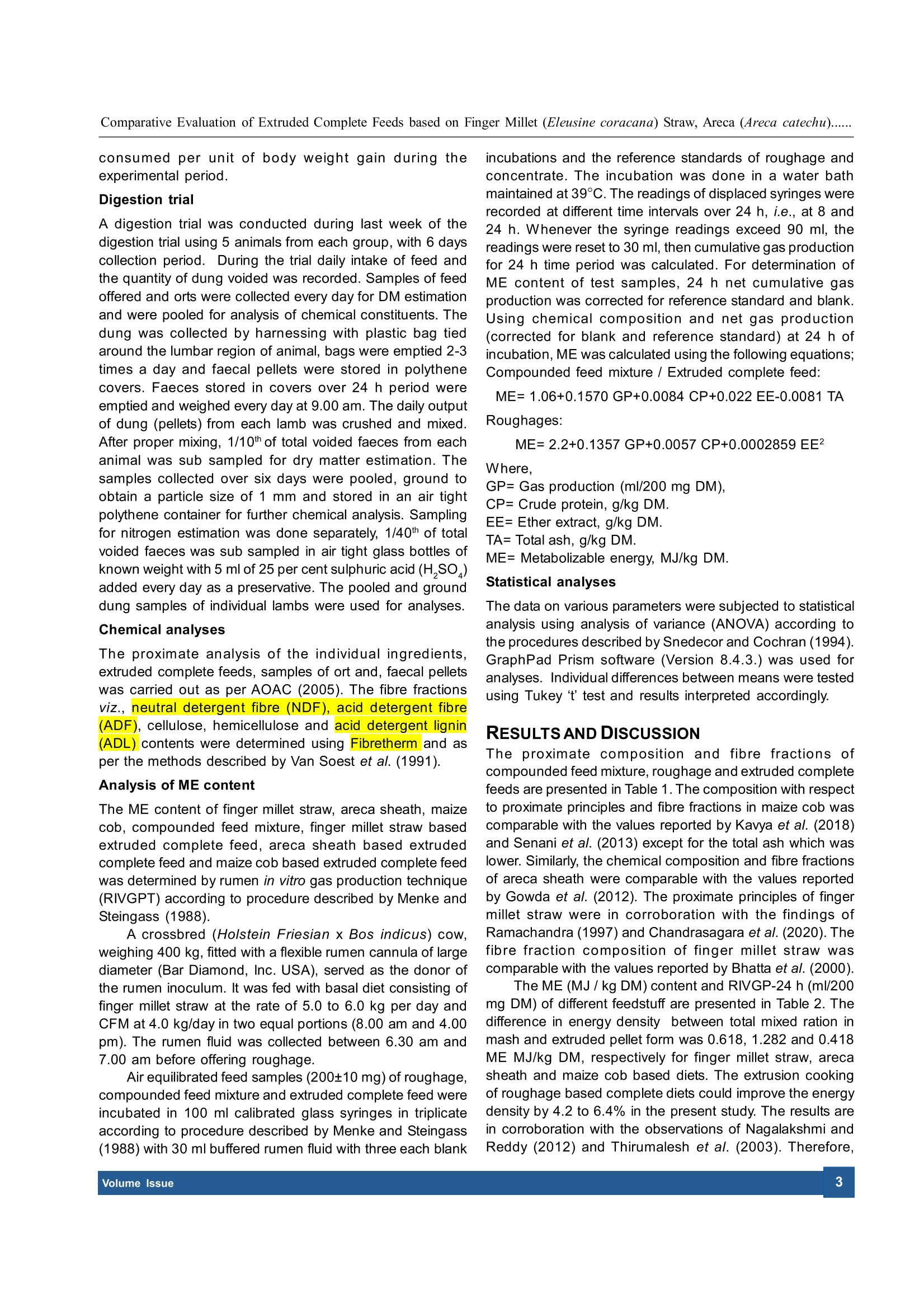
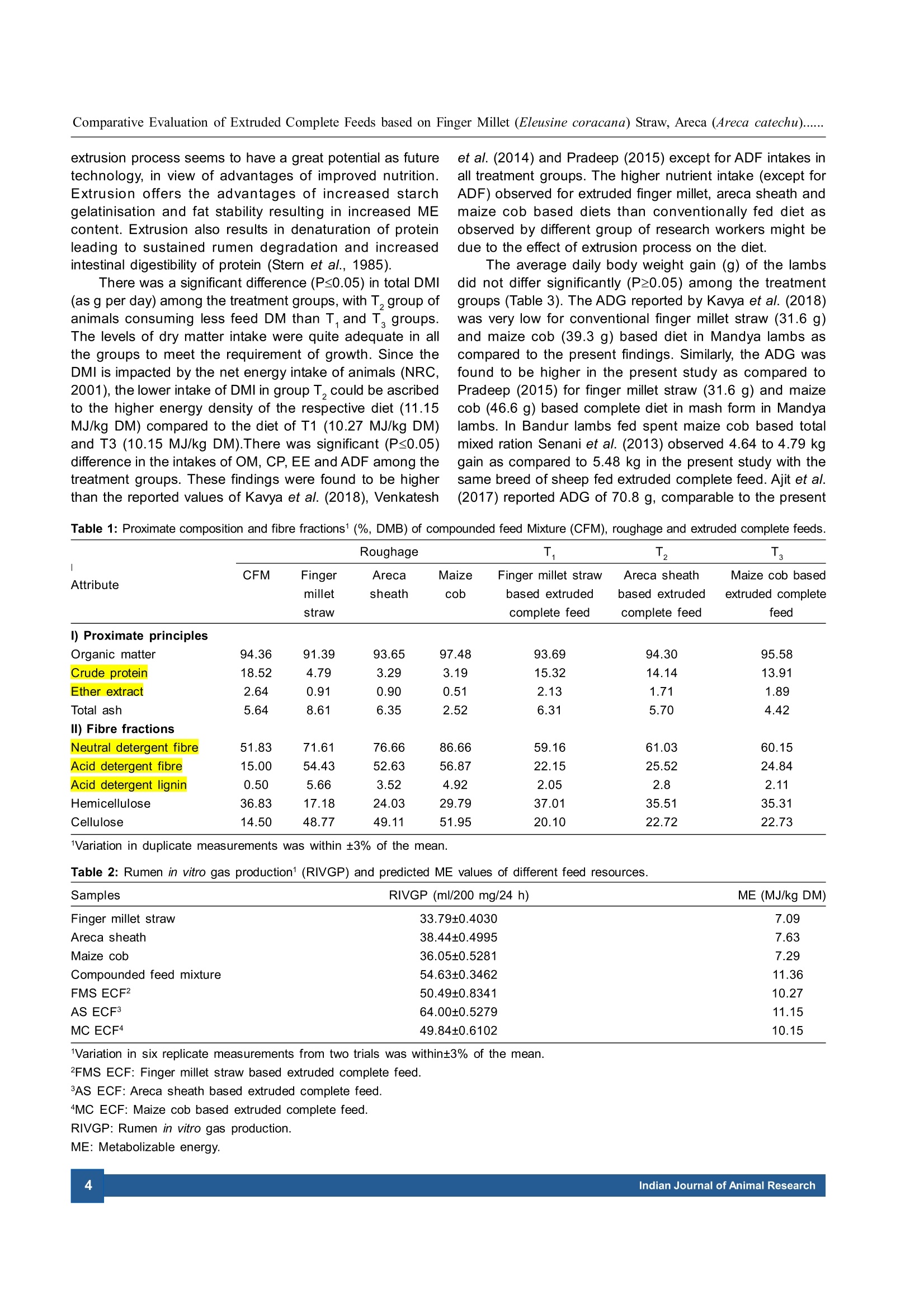

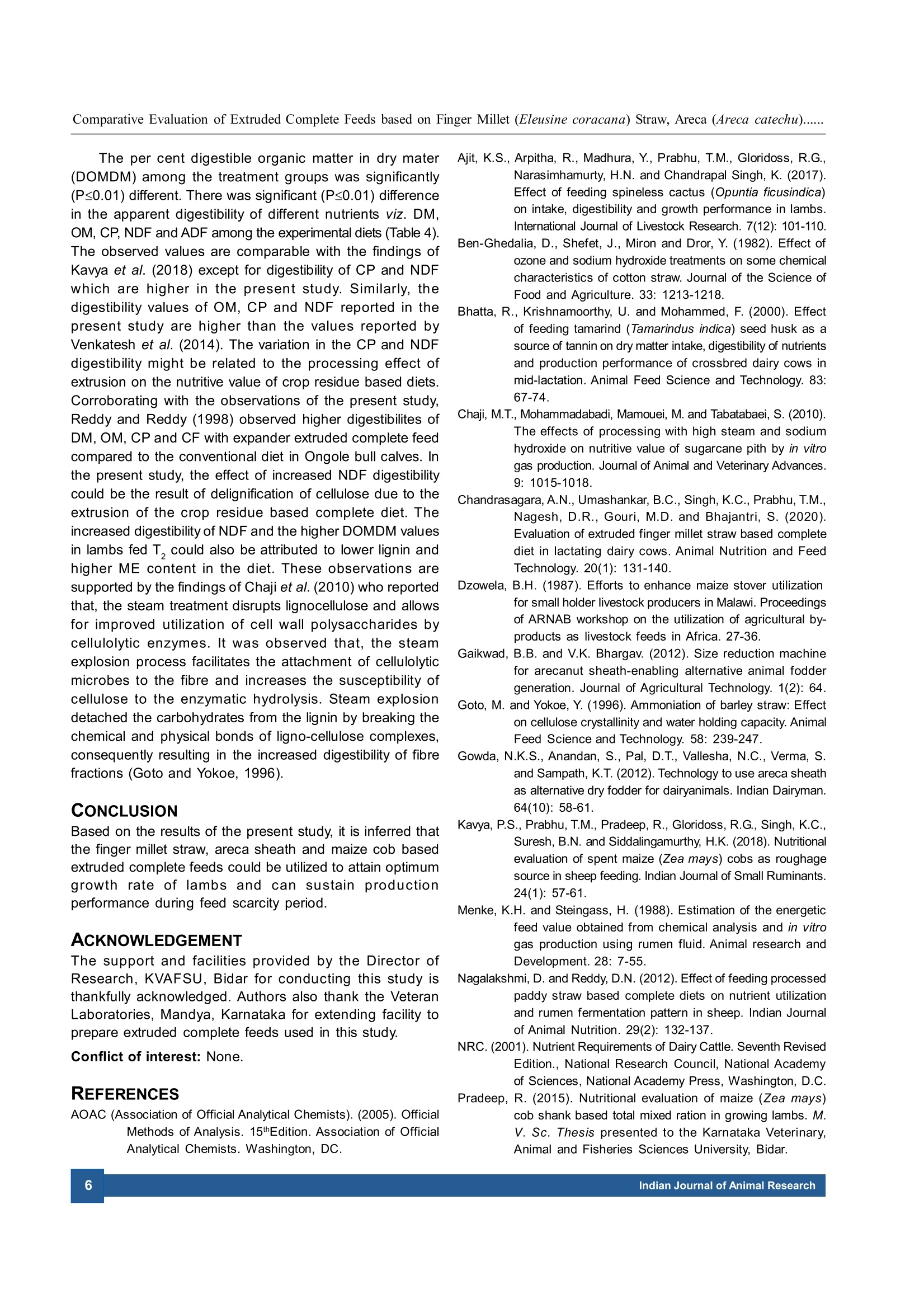
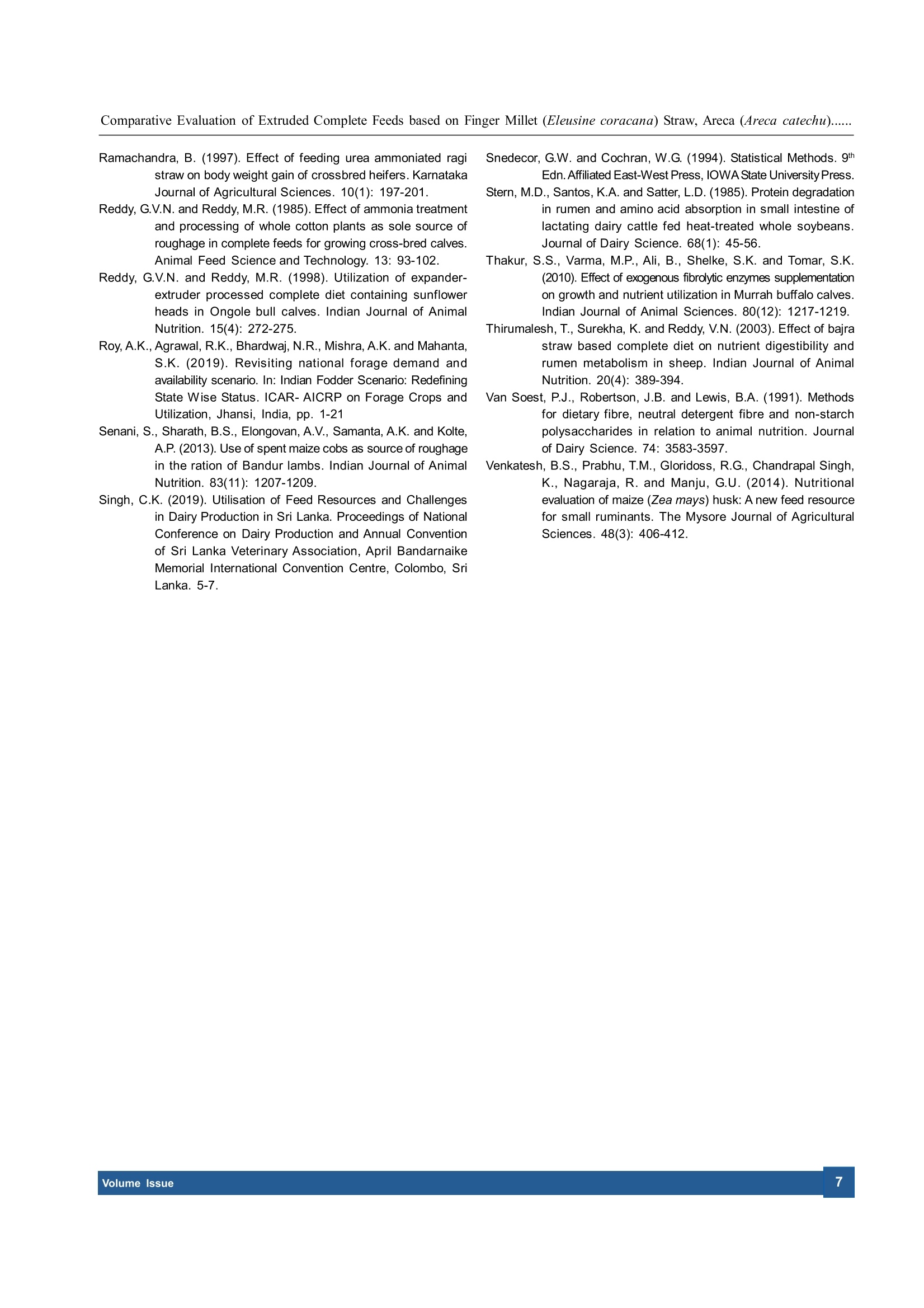
还剩5页未读,是否继续阅读?
中国格哈特为您提供《基于䅟子秸秆、槟榔鞘、玉米棒的曼迪亚羔羊挤压全价饲料中中性洗涤纤维、酸性洗涤纤维、酸洗木质素、蛋白质和脂肪含量检测》,该方案主要用于饲料中营养成分检测,参考标准--,《基于䅟子秸秆、槟榔鞘、玉米棒的曼迪亚羔羊挤压全价饲料中中性洗涤纤维、酸性洗涤纤维、酸洗木质素、蛋白质和脂肪含量检测》用到的仪器有格哈特全自动型纤维分析仪FT12、格哈特快速干燥仪STL56、格哈特全自动快速索氏提取SOXTHERM、格哈特带自动进样器凯氏定氮仪VAP500C、格哈特杜马斯定氮仪DT N Pro、德国移液器MM、凯氏定氮催化剂5.0g K2SO4+0.5g CuSO4 x 5H2O
相关方案
更多
该厂商其他方案
更多










